Artificial Intelligence & Machine Vision
This is the best assignment sample of CN7023 Artificial Intelligence & Machine Vision
Abstract
The bird prediction is the important task and it is useful in many ways. The birds are the good ecological indicator. The bird prediction is important one for finding environment changes. It is necessary to classify the birds according to their species. In this paper we will perform some image pre-processing steps, and further processes are done by using the artificial neural network. The artificial neural network is used to classify the birds according to their species. By classifying this information it also helps in biodiversity. In this paper we will see some technics of convolutional neural networks which helps to predict and classify the birds in a correct way.
Keywords: ANN, Image pre-processing, convolution neural network.
Introduction
The bird prediction is very important that we should know the species of birds and their existence in this world. Many of them still believe that birds are mainly used for predicting the environmental change. Some of birds are used for predicting the earthquake. It has special type of cell which helps analyse the change in the weather. So we need to classify the birds and its category according to their species. The machine learning is the study of algorithms which will automatically improve. It is the subset of artificial intelligence. It is the branch of computer science in which making the machine to think. The machines will react to the real world problems and it will make the machine to react on that problem. The intelligence comes from knowledge and the knowledge comes from own experience. In this we will briefly discuss about the artificial neural network. There are two topologies used in artificial neural network. They are feed forward and feedback ward network.
Artificial Neural Network
The artificial neural network is the part of artificial Intelligence. It is a mathematical model which exactly works like human brain. It is the connection of interconnected neurons which provides the accurate results. The artificial neural network is used in many areas (Harsh Kukreja, 2016). The artificial neural network is learned by training and after training the results are displayed. The artificial neural network is the one of the tools that is used in machine learning.
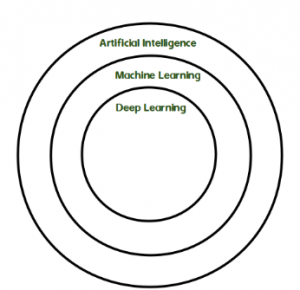
Fig 1: Sectors of AI
The artificial neural network is used in many areas. It was mainly used in industries, medical field, engineering, weather prediction etc. It plays a major role in all areas. It is very field in analysing the problems. It works exactly like a human brain. The human brain is full of neurons as same like in artificial neural networks it contains full of nodes and processing elements which helps to give an accurate result. The network is first trained with the example and it is processed. There are three layers. The first layer is input layer and there is the middle layer and third layer is the outer layer. The inner layer processes the input and sends it to the middle layer and after processing the middle layer will send the data to the outer layer.
The main benefit of using the artificial neural network is it provides the maximum accuracy. Many researchers are using the artificial neural network mainly to provide the accuracy of the data. The structure and function are based on the biological neural networks.
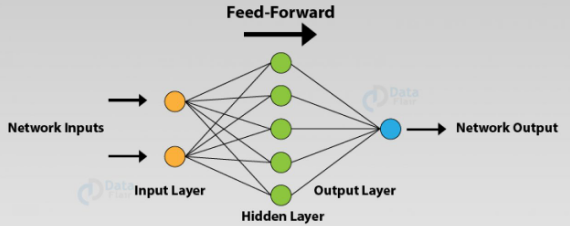
Fig 2: Different layers of AI
The artificial neural networks are used in different types of technics like pattern recognition, classification and clustering. The artificial neural network is mainly used is image classification. The network is first trained with the sample image and finally the original images are classified. Many researchers are using this artificial network in the areas of underground water prediction, ecology system, water quality management etc. It is used in many areas. It is used in many areas and it also shows the best results. It is one of the popular machine learning algorithms. Each node is weighted with some value. These values are processed during the network and the intermediate results are sent to the next layer. The value will be passed to all layers and finally the result will be generated at the last layer. The weight of the node is changed till the output value matches with the actual output value. These processes will be repeated till to get the desired output. It is also called as information processing model. It is also used in geomorphometry.
Though it plays the major role and it is widely used in all areas. It is very useful and gives very accurate fields. The area of artificial intelligence is very long and it is widely used area in research and in future it may be reached its usage at very peak.
There are two types of neural network are there. They are feed forward and feed backward network. There are different types of network and based on its convenience and complexity of application the particular type is selected and used.
Objective of the course Work
Problem statement
The main problem of this paper is classifying the image according to its species. The bird’s classification is very important for many people. It is very important for the ecological department to know the exact count of each bird according to the species. Many birds are died due to some climatic changes. The birds are having the extra power than the human about the environmental or climatic change. It also helps to identify the environmental change by identifying the necessary steps can be taken by the concerned departments. So the bird’s classification is very important. For classifying these species the convolutional networks are very useful and it is very easy to predict the image. There are different types of layers and architectures are there. Among that architecture we can select any one of the architectures and the bird prediction can be done easily. The birds are biggest asset of our country. The birds audio are used in musical college and it shows some important identification to the peoples. The birds should be saved. The ecological system that takes care of that and it will be useful for that department.
The convolutional neural network is mainly used in pattern recognition. The convolutional neural network contains different types of layers and different types of architectures.
Literature Survey
The author states that (Qiuqiang Kong, 2017) the bird prediction is very important. This statistical data is very useful for ecological department. In this paper the author focuses on classifying the audio of bird. So he used convolutional neural network and they used VGG architecture. The author mainly focuses on BAD that are bird audio detection. To perform the research he used some type of filters in his research work. The convolutional neural network is used to classify the image, speech recognition and audio tagging. The author focused on the audio of the bird. In this paper the deep residual neural network is used to classify the bird according to the acoustical data recordings. The bird’s species are classified according to the audio they have recorded. The author found that it was difficult for classifying the some of the birds due to some reasons.
The author states (Prof Pralhad Gavali, 2019) bird’s species classification is very useful in many terms. The author has downloaded the data set from website and it contains more images of birds and the author uses convolutional neural network to classify the birds. There are different types of layers in convolutional neural network. Initially the image is loaded and convolutional neural network is applied, after that based on the parameters like features, colour and shape the image is classified. Initially the network is trained with the sample and later it is tested and classified. The feature extraction is performed and the image is finally classified.
The author proposes (XIE Jiang Jian DING chang Qing, 2016) by using the audio the species of the bird is classified. The convolutional neural network is used to classify the bird according to the species. This paper was not given that much accuracy than in original identification. The collection of sample is very difficult while using the audio. So the author states that in further enhancement should be done in future to classify the bird’s species correctly and to improve the accuracy.
The author proposes that (Yo-Ping Huang, 2019) that to provide the handy tool to the bird watchers this paper focused on classifying the species of bird’s. The author suggested using the convolutional neural network which helps to classify the birds according to their types. It was very useful for the bird watchers who will admire the beauty of the birds.
The author states that (R Vishnuvardhan, 2019) that increased birds species are affecting the ecology of the country. The author tells that manual counting of birds is making so much time consuming and it is very difficult to count the number of birds. So this paper develops the system to easily count the number of species in the bird according to their category using the computer vision. The author used the deep learning method which helps to classify the birds according to their species. It will provide some support to the ecologist and it will useful for the people to know about the exact count.
The author (Dan Stowell, 2018) states the number of species in the bird is very important for the ecosystem. The manual count is very difficult in finding the exact count of the number of species. With the help of deep learning methods the birds are classified according to their species. The audio of bird is not enough to classify the data. It was very trivial and it was the biggest challenge to classify the bird because so many problems are occurred in storing the audio and audio library. The deep learning helps to classify the birds according to their species.
The author states that (Chih-Yuan Koh, 2019) that the conservation of species of bird is very important because birds are very useful in the ecosystem. The birds are classified according to their acoustic sound which was downloaded from website. The bird’s classification is done with the help of neural networks. The deep learning helps to solve the complex problem. The bird’s classification can be done very easily.
The author states that (Lasseck, 2018) the classification of species of bird is done with the help of sound. The author states the acoustics of sound produces 95 percentage of accuracy. The bird species classification is very important. The deep learning is the very big learning which helps to provide solution for the very big complex process. It provides solutions for all the tasks.
An Overview of the course work
Methodology
The proposed model focuses on classifying the bird according to their species. The image pre-processing is done and afterwards the various convolutional neural networks methods are used to classify the birds according to their species. The data set is downloaded from the Kaggle website. Nearly 100 species of birds are taken for classification. The image is first pre-processed. The image pre-processing has so many steps. The image pre-processing is done to enhance the image quality. The parameter of the image can be easily identified so the image pre-processing is very essential for classifying the image.
Image Pre-processing
The step involved in image pre-processing is first we should read the images that require pre-processing and the next step is resizing the image. If the image size is too small then we should resize the image that will be useful for further process. After completion of resizing the image, the noise removal process is performed. Some of the images may be blurred due to some problems and some of them are looking dull. These problems are rectified by performing some image enhancement techniques which will produce the image in good quality. Finally the image is enhanced with good quality and it is ready for further process of classification.
Feature Extraction
The feature extraction process is performed to increase the quality of the image. It is one of the processes of the image pre-processing. It is a dimensionality reduction of the image. It extracts the useful image from the input. It gives the extracted data from raw data in the form that is most suitable for the algorithm which is easy for its execution. Another meaning is it extracts and identifies only the useful information from the input. It is very important process in image pre-processing.
Convolutional Neural Network
The convolutional neural network is the important category of image recognition and classification. It is widely used in many areas. The process of convolutional network is input the image, process it and classify it under some category. This is the basic process of convolutional neural network.
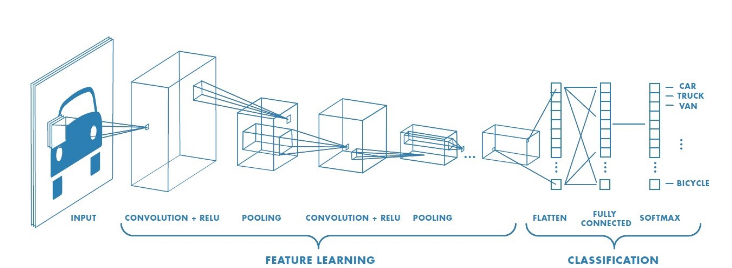
Fig 3: Types of Layers in CNN
There are different layers in convolutional neural network.
Convolutional Layer
The first layer is the convolutional layer which extracts the features of the input. It performs some mathematical calculations to perform some relationship between the pixels and performs some extraction.
Relu Layer
The relu layer is another important layer which is used to perform some operations. It is used to perform some operations like non-linear operation.
Pooling Layer
The pooling layer is used to reduce the number of parameters when the images are too large. The pooling layer can be of different types. They are max pooling, sum pooling and average pooling. These layers will select the maximum, average and sum of the feature map.
Fully connected Layers
The fully connected layer consists of different types of layers where the feature map is given as input to the fully connected layer and it is used to provide some activation function. The activation function is again used for further processing.
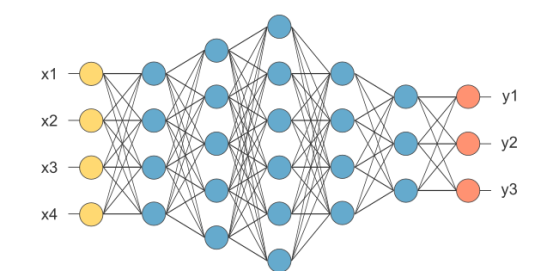
Fig4: Fully connected layer
The above described diagram is the fully connected layer. These are the different types of layers in convolutional neural networks.
Architecture in Convolutional Neural Network
There are different types of architecture are there for convolutional neural network. Let we explain one by one. They are as follows,
Le-Net5
It is one of the simplest architecture. It contains 2 convolutional and three fully connected layers.
AlexNet
It has totally eight layers that is five convolutional layer and three fully connected layers. It was one of the largest architecture among them.
VGG-16
The visual geometry group has invented this architecture and it contains the thirteen convolutional layers and three fully connected layers. It follows the activation function which was used in the Alex-Net. It uses small size filters.
Inception V1
It is the twenty two layer architecture. There is another version continued called as Inception-V2 and Inception-V3 are the further innovations.
Res-Net 50
It is mainly used to build deeper neural networks. These are the some of the architectures in convolutional layers. In this architectures we will select one among them and based on that architecture further process will be done.
The Alex-net architecture is the one used for classifying the image in convolutional neural network. It is mainly used in Image Net competition. The results of this architecture are very large. The results getting from this architecture are record breaking.
Logical flow
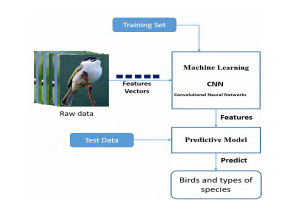
Fig 5: Bird Prediction
This is the logical flow of the process. Initially the network is trained and finally the testing and validation process is performed. In this diagram the image is given as the input to the convolutional neural network. After that the image is processed for further image pre-processing process and finally the feature extraction is performed. Then the image is finally classified according to the species by using the architectures of convolutional neural network.
Simulation
The dataset is downloaded from the Kaggle website and it is has sample of 100 species of birds. The classification of birds is very important as it predicts the changes in the environment. The neural network is developed to see the accuracy. There are three models in the developed convolutional neural network. They are training phase, validation and testing phase. The theoretical sample bird species are shown as follows. The theoretical value is calculated separately for training, testing and validation. Nearly fifty species of birds are taken and its accuracy is calculated. The accuracy for sample four species of birds is 93.13 %, 93.22 %, 94.17 % and 94.02 percentages. These are example for one species of bird. The values are depicted for training, validation and testing.
Initially the data is trained and validated and finally it is tested. The developed model undergoes these steps to correctly classify the model. The bird prediction is also very important in the ecosystem.
The diagram for the training data set is performed.
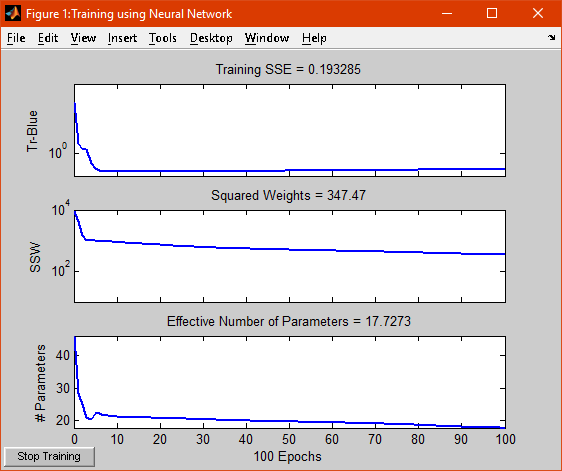
Fig 7: Training the data
Results

Fig 8: Accuracy Calculation1
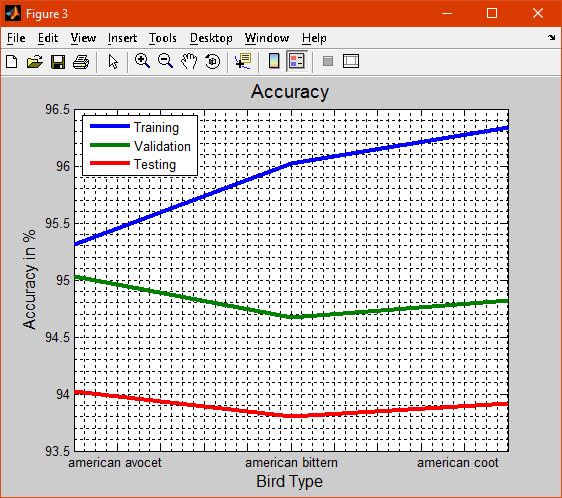
Fig 9: Accuracy Calculation 2
The accuracy for the developed model is shown and accuracy is calculated on three ways such as testing, validation and training model. The developed model will predict the correct species of birds and the confusion matrix is shown at the end. The accuracy of over all phases is 96.0 percentages. The maximum level of accuracy is achieved.
Confusion Matrix
The confusion matrix is also called as error matrix. It is often used to show the performance of the classification result. Though it is very simple to understand and it is very confusing to understand.
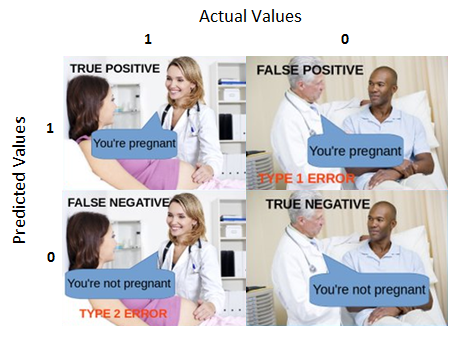 Fig 10: Example for confusion Matrix
Fig 10: Example for confusion Matrix
Conclusion
The artificial neural network is very large field which is used in many areas for research purposes. The main works of artificial neural networks in this problem are to correctly classify the bird species. The bird’s species should be classified correctly to know the exact count of the species. It is very important for the ecological department to care about the bird’s species. The artificial neural network has applied in all areas. In artificial network we have used convolutional neural networks. The convolutional neural networks are very useful for classifying the data. The convolutional neural network has different types of layers and we have seen briefly about those layers and different types of architectures. The detailed explanations about the architectures are seen. The accuracy is the very measure for the classification problem. The accuracy is calculated at ten different levels separately for the training, testing and validation. Each node in the neural network has some values. Those values are adjusted to meet the expected output. These values are repeatedly changed to achieve the task.
The developed model should be very efficient and accurate. Then only the model is very useful for the further process. The efficiency of the model is also very good. The confusion matrix is shown at the last which is used to analyse the performance of the classification result. The confusion matrixes contain the four parameters. They are true positive, true negative, false positive and false negative. The example is also shown for the confusion matrix. The correctly predicted true positives and incorrectly predicted false negatives determine the performance of the developed model. The problem in previous survey papers are they have used the bird’s audio which is used to classify according to their species. The problem in that is there is no enough sound libraries and there are further processes for filtering the audio without noise. In this paper the image processing is very easy and it also high accuracy for the developed model. It is also very useful for the persons who will like birds mostly. The developed solution is used for further investigation also.
References
Bibliography
Chih-Yuan Koh, J.-Y. C.-l.-Y.-H.-W. (2019). Bird Sound Classification using Convolutional Neural Networks. IEEE, 10.
Dan Stowell, M. D. (2018). Automatic acoustic detection of birds through deep learning : The first bird audio Detection challenge. Methods in Ecology and Evolution , 15.
Harsh Kukreja, B. S. (2016). An introduction to Artificial Neural Network. International Journal of Advance Research and Innovative Ideas in eduation, 5.
Lasseck, M. (2018). Acoustic bird detection with deep convolutional neural networks. Detection and Classification of Acoustic Scenes and Events, 5.
Prof Pralhad Gavali, M. P. (2019). Bird Species Identification using Deep Learning. International Journal of Engineering Research & Technology, 5.
Qiuqiang Kong, Y. X. (2017). Joint Detection and Classification Convolutional Neural Natwork on Weakly Labelled Bird Audio Detection. 25th European Signal Processing Conference, 5.
R Vishnuvardhan, G. D. (2019). Automatic detection of flying bird species using computer vision techniques. International Conference on Physics and Photonics Processes in Nano Sciences, 15.
Shadman Sakib, N. A. (2019). An Overview of Convolutional Neural Network : Its Architecture and Applications. IEEE Access, 10.
XIE Jiang Jian DING chang Qing, L. W. (2016). Audio only Bird Species Automated Identification Method with Limited Traning Data Based on Multi channel Deep Convolutional Neural Networks. Arxiv, 11.
Yo-Ping Huang, H. B. (2019). Bird Image Retrieval and Recognition Using a Deep Learning Platform. IEEE Access, 10.
Know more about UniqueSubmission’s other writing services:

